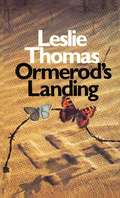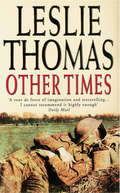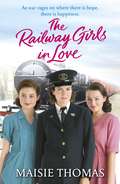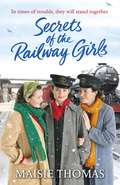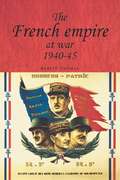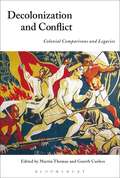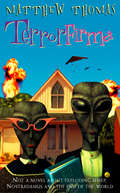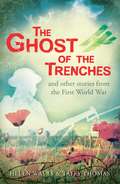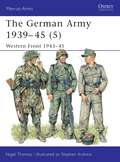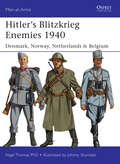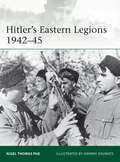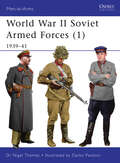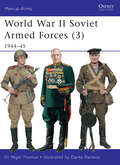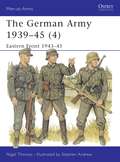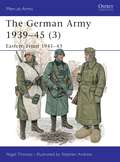- Table View
- List View
Ormerod's Landing
by Leslie ThomasHistorians of the Second World War have hitherto omitted to mention that the first British raid on German-occupied France took place within four months of Dunkirk. It happened at midnight on September 21st, 1940, the landing being made at the small fishing town of Granville, in Normandy. The landing party consisted of a detective-sergeant of the Metropolitan Police (V Division), a young French woman schoolteacher and an ugly mongrel dog named Formidable. They were considerately brought ashore by the Germans themselves.George Ormerod was the detective sergeant in question, not the most imaginative of policemen, but, true to his name, most resolute in his investigations. (An ormer is a notably tenacious shell-fish of the English Channel.) While the war is being lost all around him, Ormerod remains obsessed with the mundane murder of a young woman in Wandsworth, even pursuing his investigations amongst the returning and bewildered troops.How the investigation blazed a savage trail through rural Normandy and led to Nazi-occupied Paris, and how Marie- Thérèse Velin and her often ruthless Resistance allies become involved with George Ormerod are questions Leslie Thomas answers as his tale unfolds. In Ormerod's Landing, an exciting and ironic tale of Britain and France in the early years of the war, he once again creates a tender, farcical world in which his unique humour and irony flourish.
Other Times
by Leslie ThomasAt the start of the war in 1939 James Bevan is a junior officer approaching middle-age, attached to a small anti-aircraft unit on the south coast.Abandoned by his wife, the soldiers he command are his family: Bairnsfather, whose sexual encounters with his girl friend Muriel take place in an air-raid shelter; Cartwright, trying to keep two women on his gunner's pay of a shilling a day; Hignet, cosily educating himself in the orderly room. It is a rude awakening when they are called upon for the real war.Hugely absorbing, rich and rewarding, Other Times brims with history and experience, love, sorrow and humour.
A Christmas Miracle for the Railway Girls: The brand new romantic historical fiction book perfect for Christmas 2022 (The railway girls series #6)
by Maisie Thomas'Heartwarming historical fiction ... The perfect stocking filler for fans of Nancy Revell, Daisy Styles and Margaret Dickinson' Eastern Daily Press__________________The sixth heartwarming, feel-good instalment in the much-loved Railway Girls series!Manchester, 1942. There are surprises in store for the railway girls this festive season...When Cordelia's daughter Emily falls for a young chap who doesn't meet the approval of her father, Cordelia is reminded of her own first love - a love that she has never forgotten.Mabel is determined to get to the bottom of a spate of local burglaries. Her heart is in the right place as she sets out on a quest to clear her friend's name, but there will be unforeseen consequences.It's nothing short of a miracle when Colette returns to Manchester. But it's not going to be easy for her to keep living the life she once knew, and an impossible situation lies ahead.There will be more than one storm for the railway girls to weather but with the friendship and support of one another, there's hope that all will be well by Christmas...Readers LOVE the Railway Girls:'Make yourself a cuppa and find a comfy spot on the sofa because you are not going to be able to put this down''I simply cannot wait for the next one - I am hooked!''Gives a vivid picture of women's lives in wartime Manchester''Dramatic, intriguing and sprinkled with plenty of wit and heart''It's just like catching up with old friends'
Christmas Wishes for the Railway Girls: The new feel-good and festive WW2 historical fiction (The Railway Girls Series, 8)
by Maisie ThomasThe eighth, heartwarming instalment in the much-loved Railway Girls series!This will be a Christmas to remember for the railway girls. . .Little Max is growing day by day and Joan is adjusting to her new life. But in her heart of hearts, she is desperate to return to work on the railways.Margaret's job in the engine shed is demanding. But when a friend finds herself in crisis, she knows she must do everything she can to help her.Alison is overjoyed at the prospect of organising a Christmas wedding until a long-held secret is revealed. Knowing the truth, can she find the strength to forgive those she holds most dear?As war rages on, the railway girls must also battle with matters of the heart. Can they overcome their troubles in time for Christmas?Readers LOVE the Railway Girls:'Make yourself a cuppa and find a comfy spot on the sofa because you are not going to be able to put this down''I simply cannot wait for the next one - I am hooked!''Gives a vivid picture of women's lives in wartime Manchester''Dramatic, intriguing and sprinkled with plenty of wit and heart''It's just like catching up with old friends'
Christmas with the Railway Girls: The heartwarming historical fiction book to curl up with at Christmas (The railway girls series #4)
by Maisie Thomas'Heartwarming historical fiction ... The perfect stocking filler for fans of Nancy Revell, Daisy Styles and Margaret Dickinson' Eastern Daily Press___________________Manchester, 1941Christmas is the season for family and friends, and this year the railway girls will need each other more than ever.Cordelia appears to have the perfect life. When her daughter Emily arrives home unexpectedly, she can't wait to introduce her to her friends. But when things don't go to plan, Cordelia must decide where her loyalty lies.Things aren't going too smoothly for Alison either. Her beloved boyfriend has yet to propose, but there's a charity fundraiser dance and she's dressed up specially. Surely, tonight must be the night.Colette's friends are envious of her devoted husband; he meets her after every shift on the railway, and accompanies her around town. But Colette has a secret, one that will change her life - if only she knew who to confide in.With the festive season fast approaching, the railway girls are hoping for some Christmas magic... ___________________ Readers LOVE the Railway Girls:'Make yourself a cuppa and find a comfy spot on the sofa because you are not going to be able to put this down''I simply cannot wait for the next one - I am hooked!''Gives a vivid picture of women's lives in wartime Manchester''Dramatic, intriguing and sprinkled with plenty of wit and heart''It's just like catching up with old friends'
Hope for the Railway Girls: the new book in the feel-good, heartwarming WW2 historical saga series (The railway girls series #5)
by Maisie ThomasBeing a railway girl isn't always easy but together, they can overcome every challenge that stands in their way...___________________Manchester, 1942 A new year brings new hope for the railway girls. Alison's romance with the charming Dr Maitland is blossoming, but then she is posted away from Manchester. Working in a canteen isn't part of her plan, nor is meeting her beau's old girlfriend - one who just happens to want him back. Margaret is supportive of her friend's new relationship until she realises exactly who he is. Torn between keeping her secret and warning Alison, she turns to Joan for help. Working in Lost Property wouldn't be Joan's first choice of job, but with a baby on the way she knows she can't continue being a station porter. As she looks to the future, can she put the troubles of her past behind her?Readers LOVE the Railway Girls:'Make yourself a cuppa and find a comfy spot on the sofa because you are not going to be able to put this down''I simply cannot wait for the next one - I am hooked!''Gives a vivid picture of women's lives in wartime Manchester''Dramatic, intriguing and sprinkled with plenty of wit and heart''It's just like catching up with old friends'
The Railway Girls
by Maisie Thomas__________________________________The first novel in the wonderful new Railway Girls series, perfect for fans of Nancy Revell and Ellie Dean.In February, 1922, at the western-most entrance to Victoria Station in Manchester, a massive plaque was unveiled. Beneath a vast tiled map showing the lines of the Lancashire and Yorkshire Railway network, a series of seven bronze panels recorded the names of the men of the Lancashire and Yorkshire Railway who gave their lives for King and Country in the Great War – a total of 1,460 names.In March, 1940, a group of women of varying ages and backgrounds, stand in front of the memorial, ready to do their bit in this new World War..._________________________________________Mabel is determined to make a fresh start as a railway girl where no one will know the terrible thing she did and she can put her guilt behind her... Or is she just running away?Meanwhile Joan will never be as good as her sister, or so her Gran keeps telling her. A new job as a station clerk could be just the thing she needs to forget her troubles at home.And Dot is further into her forties than she cares to admit. Her beloved sons are away fighting and her husband – well, the less said about him the better. Ratty old sod. She is anxious to become a railway girl just like her dear mam – anything to feel she is supporting the sons she prays for every night.The three women start off as strangers, but soon form an unbreakable bond that will get them through the toughest of times...
The Railway Girls in Love (The railway girls series #3)
by Maisie ThomasThe brand new Railway Girls novel set in Manchester during WWII. Perfect for fans of Nancy Revell, Daisy Styles and Margaret Dickinson.___________________Readers LOVE the Railway Girls: 'Gripping and intriguing''Great story lines''Exceptional story . . . a must-read' 'Poignant''Emotional . . . strong women' ___________________Love is in the air, and together the railway girls can overcome even the hardest of times.Mabel has finally put the past behind her, and her relationship with the dashing Harry is stronger than ever. That is, until an old flame shows up, leaving Mabel questioning her future.Meanwhile Joan has made amends with Bob - if only she could do the same with Gran. And there's still that family mystery she wants answer to, isn't there?As a mother and grandmother, Dot Green has always put her family first. Her job as a parcels porter has brought new purpose to her life, so is it finally time to start following her heart . . .Life as a railway girl is busy but as war rages on and air raids disrupt daily life, the women realise they need each other more than ever, especially when there might be wedding bells on the horizon.
Secrets of the Railway Girls (The railway girls series #2)
by Maisie ThomasThe second novel in the uplifting railway girls series that shows just how important friendship and love is in a time of uncertainty and change. Perfect for fans of Nancy Revell. Manchester, November 1940As the war continues and secrets threaten the railway girls, they will discover the true meaning of friendship. --------------------------------- For Dot, her job on the railways is everything. Transporting parcels around the country gives her pride that she is doing her bit for the war effort, but a growing friendship causes problems when home and work collide. Joan loves her boyfriend Bob dearly, but when tragedy strikes, her heart is torn apart, and she is forced to make a decision that could hurt those she loves most. Meanwhile Mabel has finally found a place to call home and her relationship seems to be going from strength to strength. However, the relentless bombing in the Christmas blitz is about to destroy everything she holds dear, and she will need her friends’ courage and generosity now more than ever.Brought together by their work on Manchester’s railways, the three women find that with the support and encouragement of each other, they can get through even the most challenging of times.
The Surgeon's Christmas Baby: The Cowboy Seal's Jingle Bell Baby The Surgeon's Christmas Baby (Cowboys of the Rio Grande #2)
by Marin ThomasUNEXPECTED FAMILY…
The French empire at War, 1940–1945 (Studies in Imperialism #29)
by Martin ThomasThe French empire at war draws on original research in France and Britain to investigate the history of the divided French empire – the Vichy and the Free French empires – during the Second World War. What emerges is a fascinating story. While it is clear that both the Vichy and Free French colonial authorities were only rarely masters of their own destiny during the war, preservation of limited imperial control served them both in different ways. The Vichy government exploited the empire in an effort to withstand German-Italian pressure for concessions in metropolitan France and it was key to its claim to be more than the mouthpiece of a defeated nation. For Free France too, the empire acquired a political and symbolic importance which far outweighed its material significance to the Gaullist war effort. As the war progressed, the Vichy empire lost ground to that of the Free French, something which has often been attributed to the attraction of the Gaullist mystique and the spirit of resistance in the colonies. In this radical new interpretation, Thomas argues that it was neither of these. The course of the war itself, and the initiatives of the major combatant powers, played the greatest part in the rise of the Gaullist empire and the demise of Vichy colonial control.
Decolonization and Conflict: Colonial Comparisons and Legacies
by Martin Thomas Gareth CurlessInsurgency-based irregular warfare typifies armed conflict in the post-Cold War age. For some years now, western and other governments have struggled to contend with ideologically driven guerrilla movements, religiously inspired militias, and systematic targeting of civilian populations. Numerous conflicts of this type are rooted in experiences of empire breakdown. Yet few multi-empire studies of decolonisation's violence exist. Decolonization and Conflict brings together expertise on a variety of different cases to offer new perspectives on the colonial conflicts that engulfed Europe's empires after 1945. The contributors analyse multiple forms of colonial counter-insurgency from the military engagement of anti-colonial movements to the forced removal of civilian populations and the application of new doctrines of psychological warfare. Contributors to the collection also show how insurgencies, their propaganda and methods of action were inherently transnational and inter-connected. The resulting study is a vital contribution to our understanding of contested decolonization. It emphasises the global connections at work and reveals the contemporary resonances of both anti-colonial insurgencies and the means devised to counter them. It is essential reading for students and scholars of empire, decolonization, and asymmetric warfare.
Decolonization and Conflict: Colonial Comparisons and Legacies
by Martin Thomas Gareth CurlessInsurgency-based irregular warfare typifies armed conflict in the post-Cold War age. For some years now, western and other governments have struggled to contend with ideologically driven guerrilla movements, religiously inspired militias, and systematic targeting of civilian populations. Numerous conflicts of this type are rooted in experiences of empire breakdown. Yet few multi-empire studies of decolonisation's violence exist. Decolonization and Conflict brings together expertise on a variety of different cases to offer new perspectives on the colonial conflicts that engulfed Europe's empires after 1945. The contributors analyse multiple forms of colonial counter-insurgency from the military engagement of anti-colonial movements to the forced removal of civilian populations and the application of new doctrines of psychological warfare. Contributors to the collection also show how insurgencies, their propaganda and methods of action were inherently transnational and inter-connected. The resulting study is a vital contribution to our understanding of contested decolonization. It emphasises the global connections at work and reveals the contemporary resonances of both anti-colonial insurgencies and the means devised to counter them. It is essential reading for students and scholars of empire, decolonization, and asymmetric warfare.
Terror Firma
by Matthew Thomas‘Blessed are the meek, for they shall be stamped upon.’ From the massively successful author that brought you exploding sheep (Before & After) comes the conspiracy theory to end them all.
The Ghost of the Trenches and other stories (Flashbacks)
by Mr Taffy Thomas Mrs Helen WattsAs the Great War raged, and in its aftermath, people created hundreds of legends and stories round it, to speak of the sadness, the heroism, the deaths. Author Helen Watts and storyteller Taffy Thomas bring together this compelling, moving collection of ghost stories and mysteries from both sides of the conflict, from the haunted U-boat to the ghost of the trenches.
The German Army 1939–45: Western Front 1943–45 (Men-at-Arms #336)
by Nigel ThomasThis book covers the high command, the developments in unit organisation, the campaigns and the uniforms and equipment of the German Army in the last two years of the war in North-West Europe and Italy. Despite the huge pressure of fighting on three fronts, ever-worsening shortages of manpower and equipment, and Allied command of the skies, Germany's decimated divisions fought on with impressive skill and determination. This period also saw a fascinating mixture of obsolescent, newly designed, and field-made combat clothing which gave the German soldier a radically different appearance from his predecessor of just five years before. Men-at-Arms 311, 316, 326, 330 and 336 are also available in a single volume special edition titled 'German Army in World War II'.
Hitler’s Blitzkrieg Enemies 1940: Denmark, Norway, Netherlands & Belgium (Men-at-Arms)
by Nigel ThomasThe armies of Denmark, Norway, the Netherlands and Belgium bore the first crushing impact of Hitler's mighty Blitzkrieg war machine in Western Europe, in a campaign that astonished and terrified the world. The German Wehrmacht was millions strong, equipped with the latest guns, tanks and aircraft, and had the priceless advantage of having learned the realities of modern warfare in Poland the previous September. The defenders of Scandinavia and the Low Countries were raised from small populations, and were inadequately funded, trained, equipped and armed. Their modest numbers, inexperience, and largely indefensible borders condemned them to rapid defeat. For this reason they have tended to be neglected by history – in many cases, unjustly. Vastly outnumbered – and, in the case of the neutral Low Countries, with their potential French and British allies reeling under simultaneous attacks – thousands of soldiers fought heroically in the hopeless defence of their homelands against the Nazi juggernaut.
Hitler's Eastern Legions 1942–45 (Elite)
by Nigel ThomasBetween 1941–45, the Germans recruited around 175,000 men from a number of minorities in the USSR, distinguishing between 'Turkomans' (predominantly Muslims) and 'Caucasians' (predominantly Orthodox Christians). Of these, many formed rear-area auxiliary units, but at least 55,000 were combat troops. The first recruits formed two battalions in the 444th Security Division raised as early as November 1941; during 1942–43 seven legions were formed, each of several battalions, eventually totalling some 53 battalions (equivalent to about 6 full divisions). However, with one exception (162nd Turkoman Division), they were not deployed as whole formations; after training in Poland, individual battalions were posted to fill out German regiments in the front lines, at first in Army Group South but later in all three Army Groups fighting on the Eastern Front. Units were also sent to Yugoslavia, Italy and the Western Front.This fully illustrated history of the Eastern legions details the organization, battle orders, combat history, uniforms and insignia of these unique units, combining contemporary photographs and full-colour illustrations with expert research from military historian Dr Nigel Thomas.
Hitler's Eastern Legions 1942–45 (Elite)
by Nigel ThomasBetween 1941–45, the Germans recruited around 175,000 men from a number of minorities in the USSR, distinguishing between 'Turkomans' (predominantly Muslims) and 'Caucasians' (predominantly Orthodox Christians). Of these, many formed rear-area auxiliary units, but at least 55,000 were combat troops. The first recruits formed two battalions in the 444th Security Division raised as early as November 1941; during 1942–43 seven legions were formed, each of several battalions, eventually totalling some 53 battalions (equivalent to about 6 full divisions). However, with one exception (162nd Turkoman Division), they were not deployed as whole formations; after training in Poland, individual battalions were posted to fill out German regiments in the front lines, at first in Army Group South but later in all three Army Groups fighting on the Eastern Front. Units were also sent to Yugoslavia, Italy and the Western Front.This fully illustrated history of the Eastern legions details the organization, battle orders, combat history, uniforms and insignia of these unique units, combining contemporary photographs and full-colour illustrations with expert research from military historian Dr Nigel Thomas.
World War II Soviet Armed Forces: 1939–41 (Men-at-Arms #464)
by Nigel ThomasThis book is a detailed analysis of the Soviet Army at the outbreak of World War II, including the Red Army's campaigns against Japan on the Manchurian plains as well as in Finland. It covers the Red Army's first operations during Operation Barbarossa when the Red Army was forced to defend Mother Russia against the German onslaught. It offers a breakdown of all the armed forces including the army, air force, paratroopers, navy and NKVD troops. In particular it covers the evolution of uniforms, equipment and insignia with the introduction of new regulations in 1935 and 1940.
World War II Soviet Armed Forces: 1944–45 (Men-at-Arms #469)
by Nigel ThomasThis book presents a detailed analysis of the Soviet armed forces during the final days of the war, covering the soldiers that successfully turned the tide against the Nazi onslaught and pushed it back into Germany itself. This final part of the series documents the Red Army's push through Germany to Berlin, which eventually culminated in the surrender of the German forces to the Allies in 1945. It also offers a detailed breakdown of all the armed forces that conducted the offensive campaigns on the Eastern Front, including the army, air force, paratroopers, navy and NKVD troops. Its colourful illustrations also include the uniforms and organizations of the Russian forces serving against Japan until the eventual surrender of all Japanese Imperial forces in August 1945.
The German Army 1939–45: Western Front 1943–45 (Men-at-Arms)
by Nigel Thomas Stephen AndrewThis book covers the high command, the developments in unit organisation, the campaigns and the uniforms and equipment of the German Army in the last two years of the war in North-West Europe and Italy. Despite the huge pressure of fighting on three fronts, ever-worsening shortages of manpower and equipment, and Allied command of the skies, Germany's decimated divisions fought on with impressive skill and determination. This period also saw a fascinating mixture of obsolescent, newly designed, and field-made combat clothing which gave the German soldier a radically different appearance from his predecessor of just five years before. Men-at-Arms 311, 316, 326, 330 and 336 are also available in a single volume special edition titled 'German Army in World War II'.
The German Army 1939–45: Eastern Front 1943–45 (Men-at-Arms)
by Nigel Thomas Stephen AndrewIn early 1943 the annihilation of the 6th Army at Stalingrad marked the irreversible turning-point of the war in the East. Despite occasional local successes gained in the face of great odds – testimony to the Wehrmacht's extraordinary resilience – from now on Germany was on the defensive. Despite Hitler's damaging interference the quality of German field leadership, and of new weapons, remained high; but each new Soviet offensive pushed the front line closer to – and finally, across – the borders of the Reich. In this fourth title of their sequence author and artist describe and illustrate the developments in unit organization, uniforms and equipment during 1943–45, including information on European and Eastern volunteer units; text and illustrations are supported by detailed tables. Men-at-Arms 311, 316, 326, 330 and 336 are also available in a single volume special edition titled 'German Army in World War II'.
The German Army 1939–45: Eastern Front 1941–43 (Men-at-Arms)
by Nigel Thomas Stephen AndrewOperation Barbarossa, the attack on the Soviet Union, commenced on 22 June 1941. It became the biggest conflict in military history, with some three million German troops and about 900,000 allies facing almost 4.7 million Soviet troops. The effects would colour postwar European history for the next 50 years. This title examines the history of the conflict, and the organisation, uniforms and insignia of the German Army on the Eastern Front from 1941-43. The book contains numerous illustrations and photographs throughout, incuding eight fine full-page colour plates by Stephen Andrew. Men-at-Arms 311, 316, 326, 330 and 336 are also available in a single volume special edition titled 'German Army in World War II'.
The German Army 1939–45: Eastern Front 1943–45 (Men-at-Arms)
by Nigel Thomas Stephen AndrewIn early 1943 the annihilation of the 6th Army at Stalingrad marked the irreversible turning-point of the war in the East. Despite occasional local successes gained in the face of great odds – testimony to the Wehrmacht's extraordinary resilience – from now on Germany was on the defensive. Despite Hitler's damaging interference the quality of German field leadership, and of new weapons, remained high; but each new Soviet offensive pushed the front line closer to – and finally, across – the borders of the Reich. In this fourth title of their sequence author and artist describe and illustrate the developments in unit organization, uniforms and equipment during 1943–45, including information on European and Eastern volunteer units; text and illustrations are supported by detailed tables. Men-at-Arms 311, 316, 326, 330 and 336 are also available in a single volume special edition titled 'German Army in World War II'.
